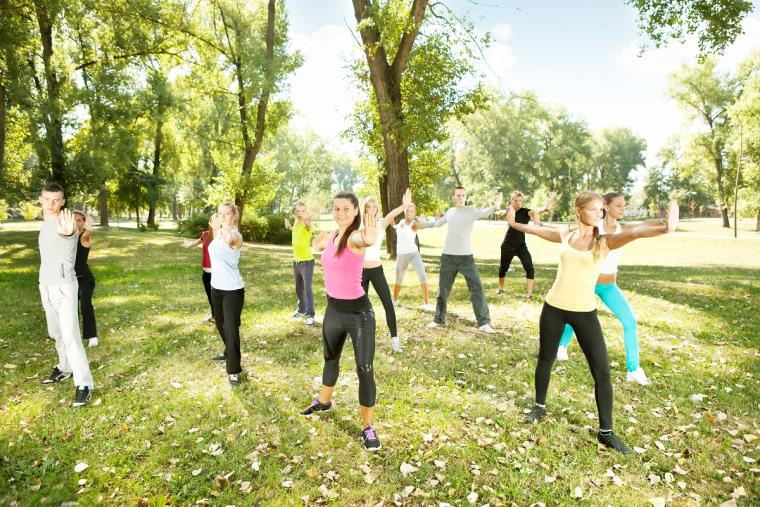
In a crime-laden Northeast Dallas neighborhood, local park and recreation officials hope a new recreation center and more green space will bring a new vibe to the area. Meanwhile, a new skate park will help rid San Francisco’s United Nations Plaza of open-air drug deals and other illegal activity, according to city leaders.
Both strategies are part of an effort by communities to develop sports and recreation spaces in areas underutilized (or avoided entirely) by local residents as a means of reclaiming land for a positive use.
“Contact with nature reduces precursors to crime like stress and aggression, making people feel happier and less inclined to engage in criminal acts,” according to The Conversation International — a global nonprofit and independent news organization “dedicated to unlocking the knowledge of experts for the public good — citing in 2019 multiple studies and examples of the relationship between parks and crime. “By giving people a place to participate in outdoor activities together, parks also promote positive social interactions and neighborly connections within diverse urban communities.”
Ground broke in June on the first phase of the Forest Adelia Project, a renovation and development plan in the North Lake Highlands neighborhood of Dallas, according to KERAnews.org, a community-supported media organization:
In March, city council members approved more than $5.5 million in funding from the Skillman Tax Increment Financing District for the Parks and Recreation department to build the project. Another $2 million will come from other city funds, according to The Dallas Morning News.
The park will be built upon existing infrastructure on land that the city bought in 2020. The city will then make room for outdoor components of the project, including a playground and basketball court, where the existing building and parking lot currently sit.
 There’s also a boxing gym in place since 2018 that the parks department helps run with the Dallas Police Athletic League. Model plans for the new space show it will include a Dallas Police substation.
There’s also a boxing gym in place since 2018 that the parks department helps run with the Dallas Police Athletic League. Model plans for the new space show it will include a Dallas Police substation.
The project will also have an indoor space run by the city’s Office of Arts and Culture, which will serve as a space for a gallery or dance theater. Details are still in the works, [Dallas Parks and Recreation Deputy Director Crystal] Ross said.
Meanwhile, in San Francisco, plans are moving forward to alter the U.N. Plaza landscape, both physically and culturally, but not without upsetting other organizations that also serve the community.
“If all goes to plan, the 150,000-square-foot plaza in the city’s Civic Center will begin construction in September to be transformed into a skate park and recreation space,” according to local media. “Mirroring the work done in other major cities like Paris and Madrid, the space would include exercise equipment, chess and ping-pong tables and daily programming, among other activities.”
The development, however, will displace the Heart of the City Farmers’ Market, which serves San Francisco’s poorest neighborhood and has called U.N. Plaza home for more than 40 years. The market reportedly will be relocated to a nearby location.
“It’s not enforcement that’s going to turn the tide,” Phil Ginsburg from the San Francisco Recreation and Parks Department told KTVU.com about bringing change to the neighborhood. “It’s activation.”
According to Trust for Public Land, more than 28 million American youths don’t live within a 10-minute walk of a park. “A solution is hiding in plain sight,” proclaims the organization’s website. “Schoolyards.”
While parks-related projects in Dallas, San Francisco and other cities aimed at deterring crime can be effective, the nonprofit Trust for Public Lands (with a mission to “connect everyone to the benefits and joys of the outdoors”) encourages schools to invite students and adults to design new and engaging schoolyards that help teach young people about the power of collaboration and advocacy.
“Across the country, Trust for Public Land is helping schools rip out asphalt or otherwise drab schoolyards and replace them with green, welcoming spaces that double as neighborhood parks,” according to its website. “From Georgia to New York to Washington State, we’ve transformed nearly 300 schoolyards through our Community Schoolyards™ initiative to date. In each project, students engage in what is known as ‘participatory design,’ surveying fellow students and neighbors and working alongside professional landscape architects.
The schoolyards thus become civic labs of a kind, in which students learn how to advocate for themselves, their schools, and their communities. They also receive a crash course in arcane subjects like stormwater management and urban heat islands, in which concrete and pavement absorb and cling to heat longer than natural surfaces. Crucially, they discover how a well-designed schoolyard — with features like trees, rain gardens and absorbent turf fields — can mitigate these growing problems.”
“From an educational perspective, regardless of what’s built, students are learning about conceptual thinking, and that is a useful tool,” added Vinita Sidhu, a landscape architect and principal at Site Workshop, the firm hired to remake schoolyards in some of the highest-need neighborhoods of Tacoma, Wash. “Who knows how this might change their path? I hope they walk away seeing how change can be affected.”
The New York Times recently covered the story of Hudson River Park, and how it helped to transform Manhattan's West Side. The formerly industrial area has been improved dramatically, and its success is generating other projects.
Some sports organizations have been able to point to specific downturns in crime when a venue is added. One of those is disc golf, detailed in this article in SDM.

